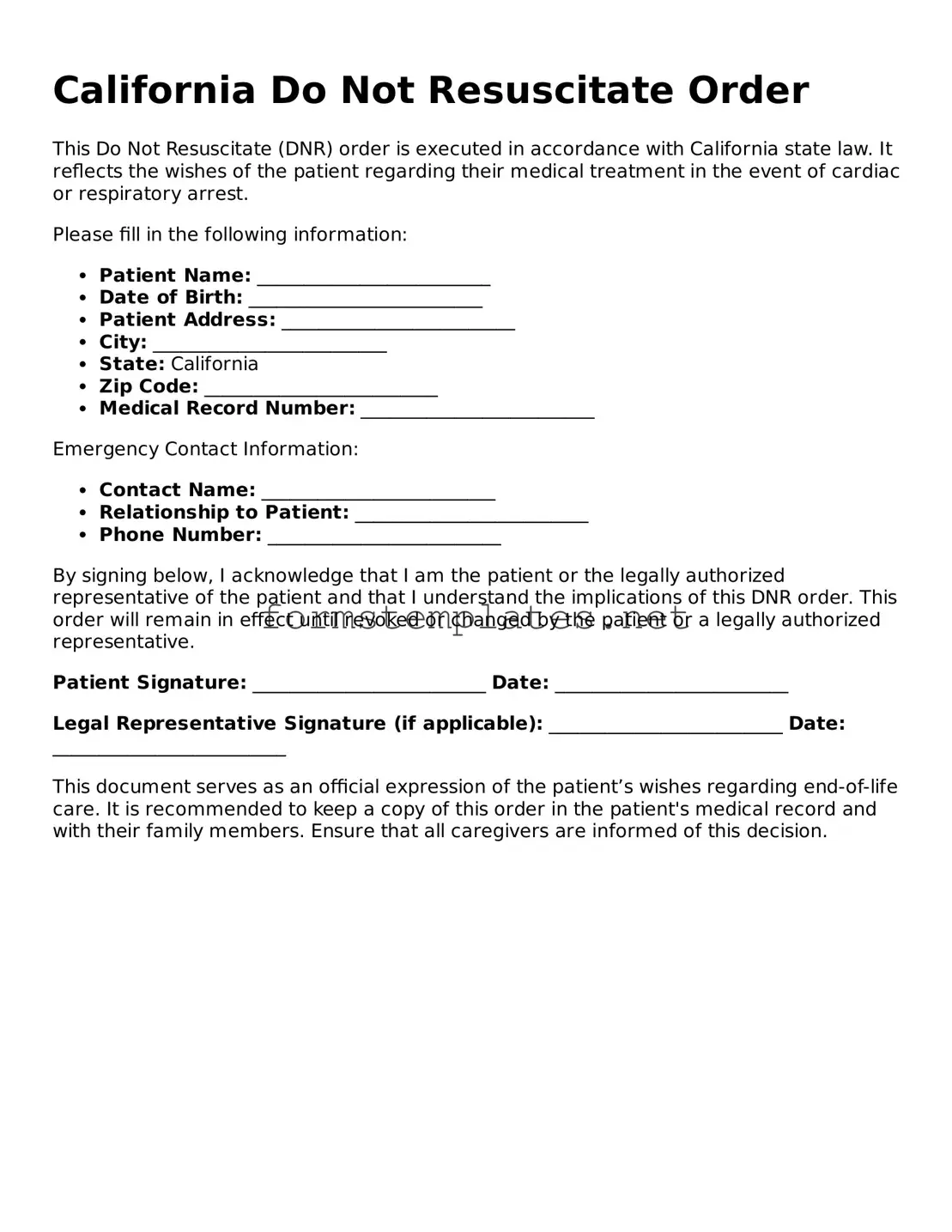California Do Not Resuscitate Order
This Do Not Resuscitate (DNR) order is executed in accordance with California state law. It reflects the wishes of the patient regarding their medical treatment in the event of cardiac or respiratory arrest.
Please fill in the following information:
- Patient Name: _________________________
- Date of Birth: _________________________
- Patient Address: _________________________
- City: _________________________
- State: California
- Zip Code: _________________________
- Medical Record Number: _________________________
Emergency Contact Information:
- Contact Name: _________________________
- Relationship to Patient: _________________________
- Phone Number: _________________________
By signing below, I acknowledge that I am the patient or the legally authorized representative of the patient and that I understand the implications of this DNR order. This order will remain in effect until revoked or changed by the patient or a legally authorized representative.
Patient Signature: _________________________ Date: _________________________
Legal Representative Signature (if applicable): _________________________ Date: _________________________
This document serves as an official expression of the patient’s wishes regarding end-of-life care. It is recommended to keep a copy of this order in the patient's medical record and with their family members. Ensure that all caregivers are informed of this decision.
